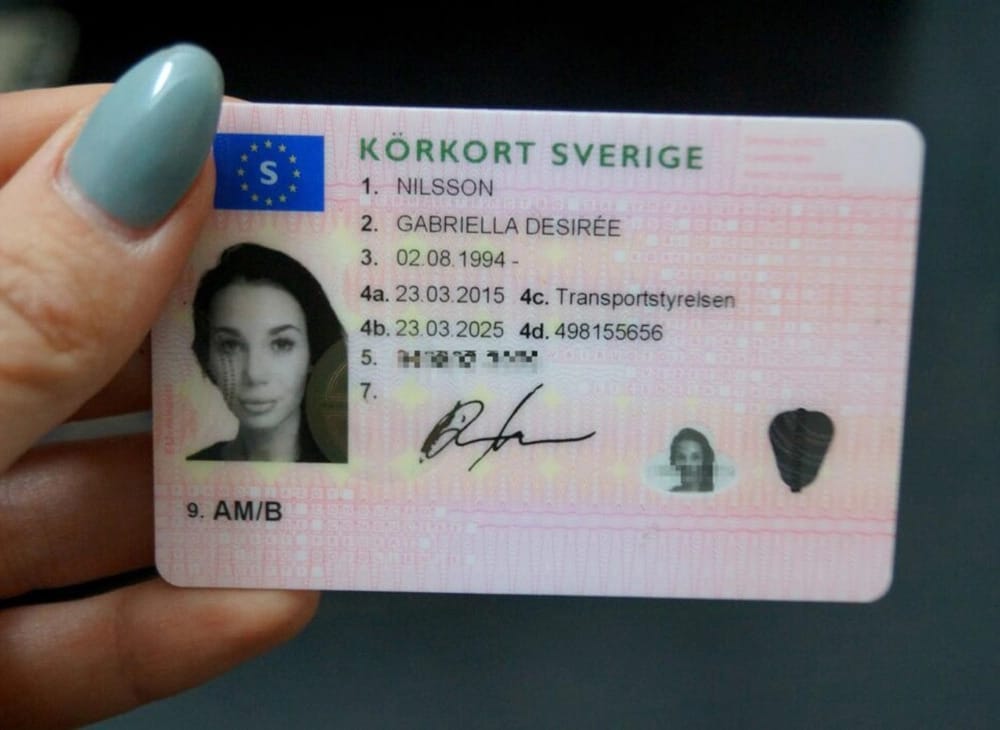
21
апреляThis Is The Swedish Driving License Online Case Study You'll Never Forget
Navigating the World Without a Driver's License: Exploring Alternatives and Implications
In today's world, where mobility is a foundation of day-to-day life, the concept of living without a driver's license may appear challenging. Nevertheless, for some people, the choice to pass up a driver's license is a mindful option driven by various aspects, including ecological concerns, expense, and individual preference. This short article looks into the options to driving and the ramifications of living without a driver's license, offering a comprehensive guide for those considering this way of life.
Comprehending the Decision
Choosing not to have a driver's license is an individual choice that can come from several reasons. For some, it's a commitment to decreasing their carbon footprint and promoting sustainable living. Others find the cost of owning and keeping an automobile prohibitive, while some simply prefer the convenience and flexibility of other modes of transportation. Regardless of the motivation, living without a driver's license requires mindful preparation and a determination to adapt.
Alternatives to Driving
Mass transit
- Buses and Trains: Public transport systems, such as buses and trains, are often the most reliable and cost-efficient alternatives. They are accessible in the majority of urban locations and supply a structured method to navigate cities and rural areas.
- Subway and Light Rail: In bigger cities, trains and light rail systems provide quick and effective travel, frequently bypassing rush hour and minimizing travel time.
Ride-Sharing Services
- Uber and Lyft: These popular ride-sharing apps offer on-demand transportation, making it easy to navigate without a car. They are particularly helpful for late-night travel and in areas with restricted public transport.
- Carpooling: Joining or forming carpool groups can minimize expenses and ecological impact. Numerous neighborhood platforms and apps facilitate carpooling for regular commutes.
Bikes and E-Scooters
- Bicycles: Cycling is a healthy and environment-friendly method to take a trip, especially for shorter ranges. Numerous cities have committed bike lanes and bike-sharing programs to motivate this mode of transport.
- Electric Scooters: E-scooters are a stylish and convenient option for quick, brief journeys. They are frequently available through rental services in metropolitan locations and can be a fun alternative to standard modes of transportation.
Walking and Jogging
- Walking: For those residing in walkable areas, strolling is a simple and reliable way to remain active and get around. It's totally free, requires no unique equipment, and benefits the environment.
- Jogging: Similar to strolling, jogging can be a healthy and low-cost method to take a trip, particularly for short ranges.
Electric and Hybrid Vehicles
- Electric Scooters and Bikes: For those who still desire the convenience of an individual lorry but are concerned about the environment, electric scooters and bikes are a feasible choice. They are low-maintenance and produce fewer emissions.
- Hybrid Cars: If the decision to avoid a driver's license is mostly due to environmental concerns, however the requirement for a car is inescapable, hybrid lorries use a happy medium. They combine traditional gasoline engines with electric motors to decrease fuel usage and emissions.
Telecommuting and Remote Work
- Work from Home: Many companies now offer remote work options, allowing employees to work from home or other places. This can considerably minimize the need for everyday travelling and the associated expenses.
- Virtual Meetings: Technology has actually made it possible to carry out business meetings and other interactions virtually, further lowering the requirement for travel.
Implications of Living Without a Driver's License
Financial Savings
- Decreased Vehicle Costs: Not having a car implies avoiding expenses such as car payments, insurance, maintenance, and fuel.
- Public Transportation Costs: While public transport does have expenses, they are generally lower than those connected with owning a car.
Environmental Impact
- Lower Carbon Emissions: By preventing using personal lorries, individuals can significantly lower their carbon footprint, adding to a more sustainable environment.
- Lowered Traffic Congestion: Fewer automobiles on the roadway can cause reduced traffic congestion, making travel more effective for everyone.
Health Benefits
- Increased Physical Activity: Using alternatives like strolling, running, and cycling can enhance physical health and psychological wellness.
- Minimized Stress: Avoiding the day-to-day troubles of driving, such as traffic and parking, can lead to a more unwinded and stress-free way of life.
Social and Community Engagement
- Community Connections: Relying on public transport or ride-sharing services can foster a sense of community and social interaction.
- Assistance for Local Businesses: Walking or cycling to local companies can assist support the local economy and minimize reliance on big, ecologically hostile corporations.
Legal and Practical Considerations
- Recognition Issues: In lots of countries, a driver's license acts as a primary form of recognition. People without a license may need to bring alternative kinds of ID, such as a passport or state-issued ID card.
- Travel Restrictions: Without a driver's license, travel to remote locations or locations with limited public transport can be challenging. Planning ahead and using alternative transport methods is essential.
Frequently asked questions
Q: How can I get around if I live in a rural area without a driver's license?
- A: In rural areas, alternatives like ride-sharing services, carpooling, and public transport might be limited. Think about joining community groups or Köpa A1 Körkort OnlineKöpa C KörkortKöpa A2 Körkort online (king-wifi.win) platforms to find local carpooling options. Electric scooters and bikes can also be helpful for shorter ranges. In addition, numerous backwoods have community transportation services that can be accessed for important trips.
Q: Can I still take a trip internationally without a driver's license?

- A: Absolutely. A driver's license is not required for the majority of international travel. Nevertheless, you may need a passport or other kinds of identification. For nations where driving is essential, you can rent a car with a valid driver's license or usage local transport services.
Q: What are the very best apps for discovering ride-sharing and carpooling alternatives?
- A: Popular apps for ride-sharing include Uber, Lyft, and Bolt. For carpooling, Waze Carpool, Ridester, and Scoop are extremely advised. These apps typically provide real-time details on available rides and assist link you with chauffeurs heading in the very same instructions.
Q: How do I handle without a driver's license if it is needed for lots of types of identification?
- A: In lots of places, a state-issued ID card or a passport can act as a primary kind of identification. It's also a great concept to bring several forms of ID, such as a credit card or a citizen registration card, to guarantee you are prepared for different circumstances.
Q: Are there any health threats associated with using public transport?
- A: While public transport can expose people to a higher danger of infectious illness, specifically in congested conditions, the benefits typically outweigh the threats. Practicing good health, such as washing hands frequently and wearing a mask, can help alleviate these threats. In addition, numerous mass transit systems have carried out precaution to safeguard guests.
Q: What are the ecological benefits of not driving a car?
- A: Not driving a car can significantly decrease your carbon footprint. Automobiles are a significant source of greenhouse gas emissions, Köpa A1 Körkort Online a1 körkort (https://www.pdc.Edu/) and by selecting public transport, biking, or walking, you can contribute to a healthier environment. This likewise helps minimize air contamination and traffic jam, improving total quality of life.
Living without a driver's license is a possible and frequently useful choice for lots of individuals. By checking out and utilizing alternative modes of transport, one can save money, reduce their ecological effect, and enhance their health and well-being. While there are challenges, such as browsing recognition and travel issues, the benefits frequently make the effort rewarding. Whether driven by personal worths or useful considerations, the decision to give up a driver's license can lead to a more sustainable and satisfying way of life.
Extra Resources
- Public Transportation Apps: Transit, Moovit, Citymapper
- Biking and Walking Apps: Strava, MapMyRide, Google Maps
- Community Carpooling Platforms: Waze Carpool, Ridester, Scoop
- Remote Work and Telecommuting Tools: Zoom, Microsoft Teams, Slack
By welcoming these options, people can produce a way of life that aligns with their values and requirements, contributing to a more sustainable and linked world.

Отзывы